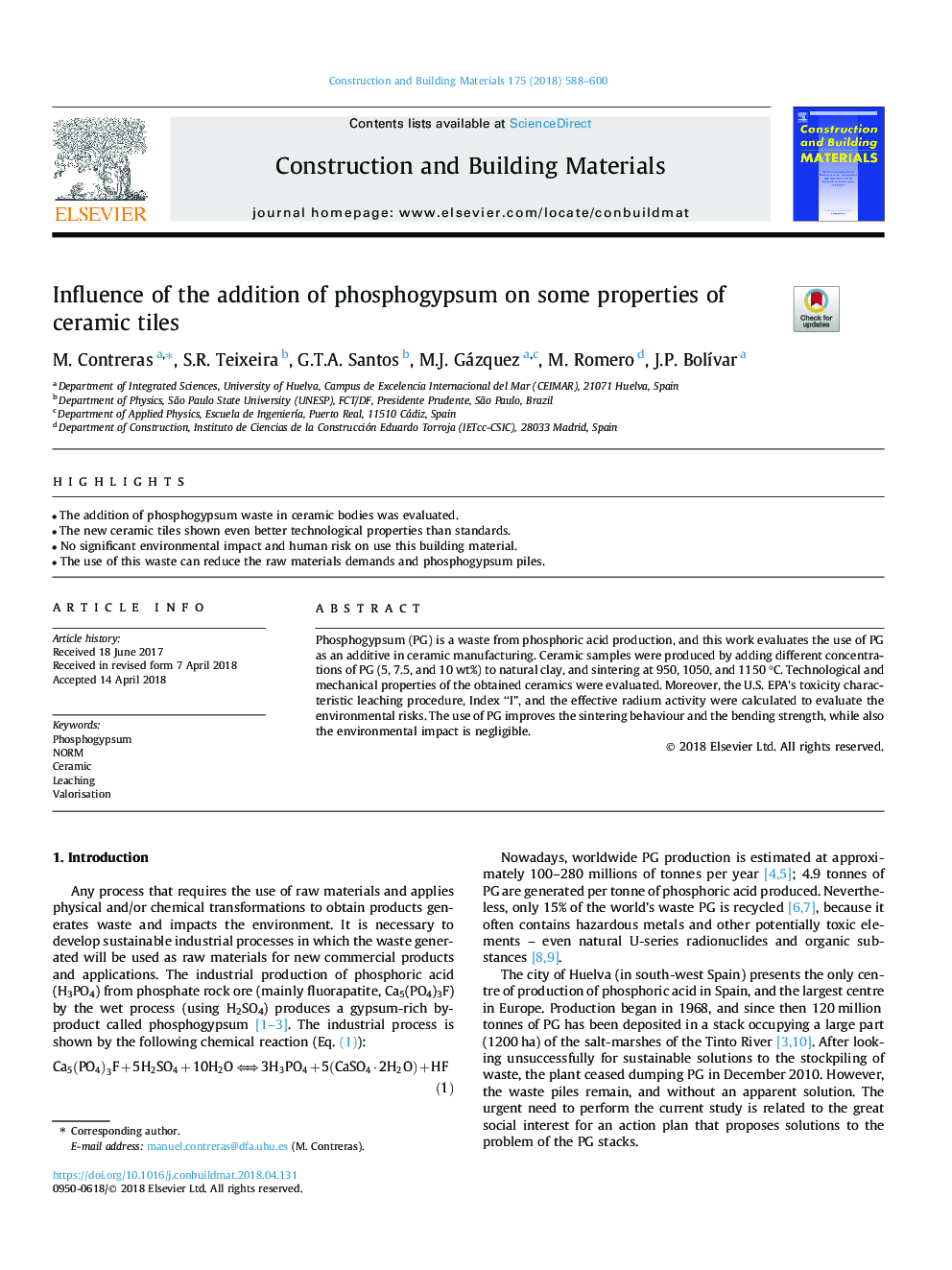| Article ID | Journal | Published Year | Pages | File Type |
|---|---|---|---|---|
| 6713215 | Construction and Building Materials | 2018 | 13 Pages |
Abstract
Phosphogypsum (PG) is a waste from phosphoric acid production, and this work evaluates the use of PG as an additive in ceramic manufacturing. Ceramic samples were produced by adding different concentrations of PG (5, 7.5, and 10â¯wt%) to natural clay, and sintering at 950, 1050, and 1150â¯Â°C. Technological and mechanical properties of the obtained ceramics were evaluated. Moreover, the U.S. EPA's toxicity characteristic leaching procedure, Index “I”, and the effective radium activity were calculated to evaluate the environmental risks. The use of PG improves the sintering behaviour and the bending strength, while also the environmental impact is negligible.
Related Topics
Physical Sciences and Engineering
Engineering
Civil and Structural Engineering
Authors
M. Contreras, S.R. Teixeira, G.T.A. Santos, M.J. Gázquez, M. Romero, J.P. BolÃvar,
